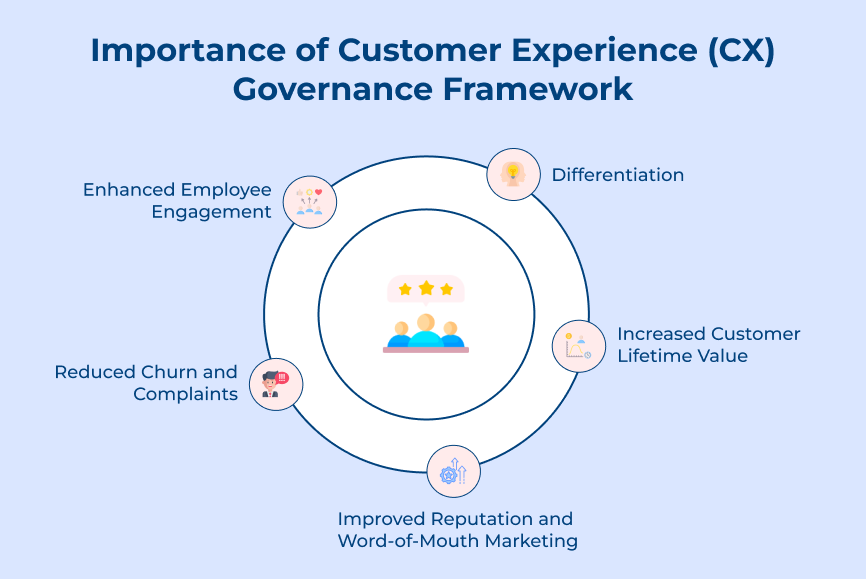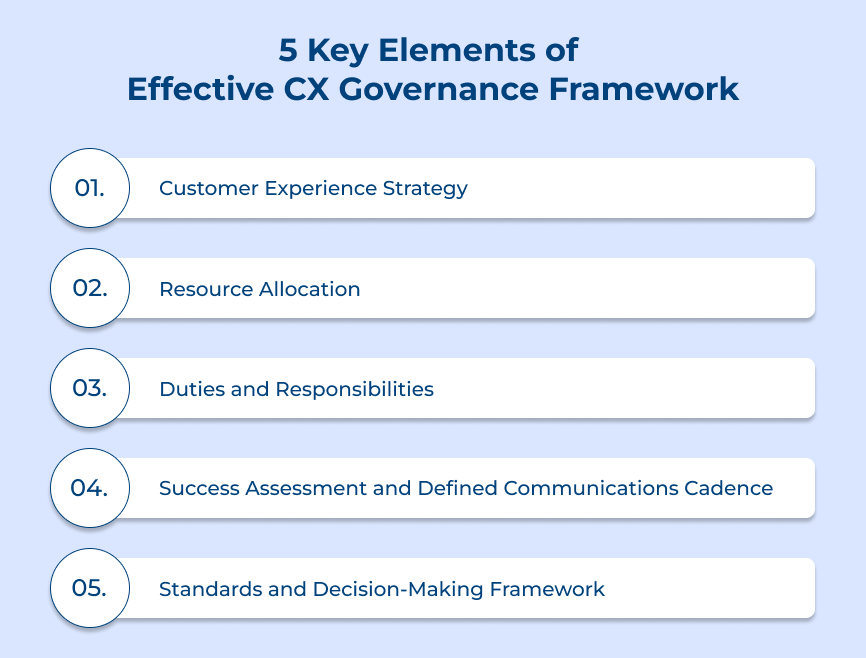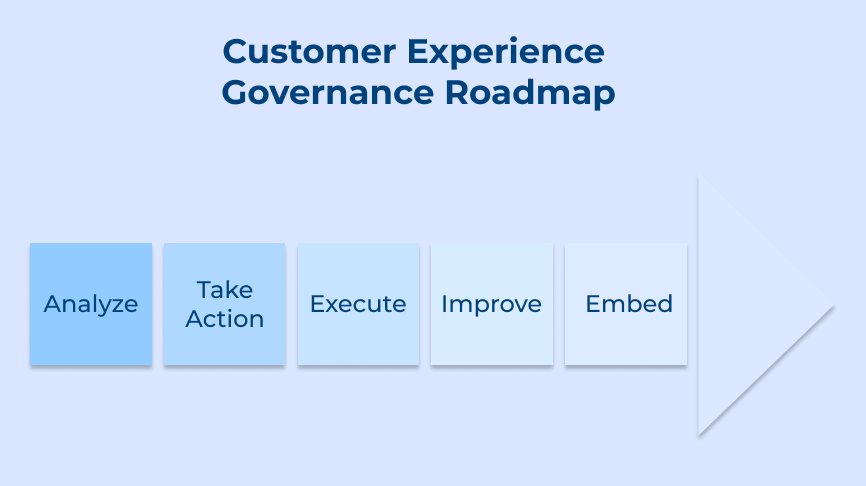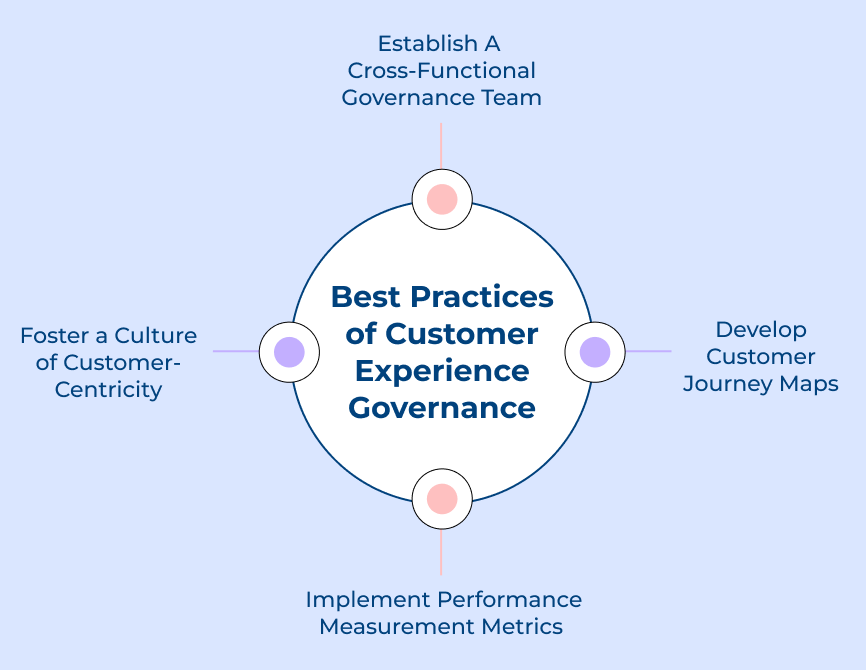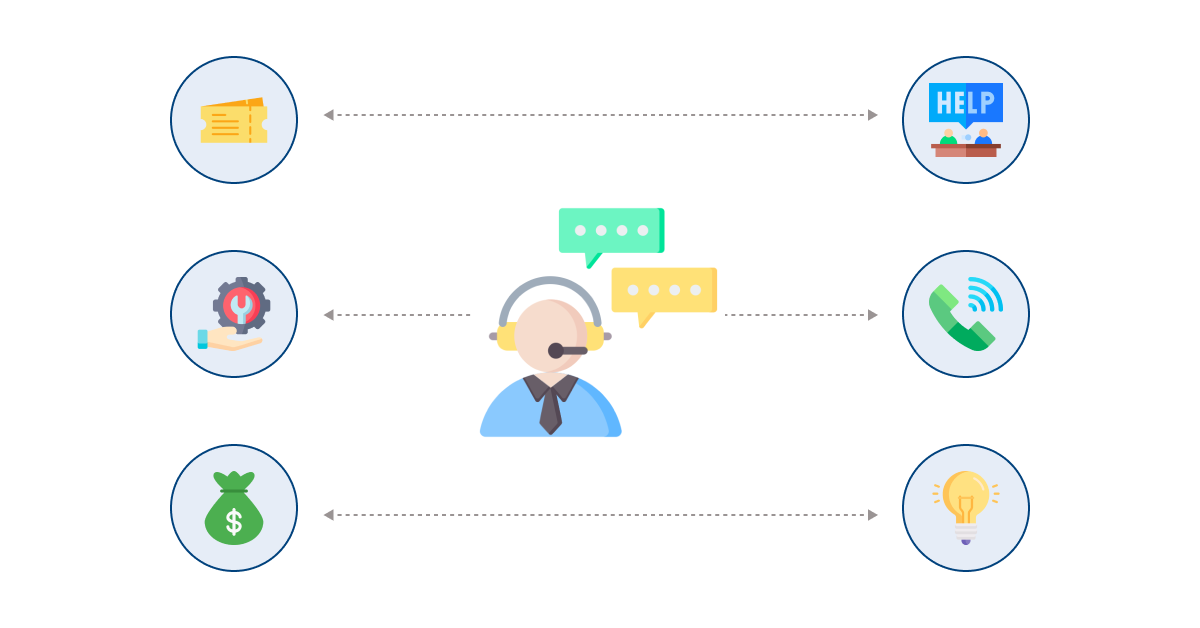1. Customer Experience Strategy
Companies are increasingly focusing on developing a customer experience strategy that serves as the key element in effective CX program governance model. A customer experience strategy is a well-defined plan that outlines how an organization aims to deliver exceptional experiences to its customers.
A cx strategy promotes a customer-centric culture, ensuring that all customer interactions are aligned with the brand’s values and objectives. It helps in understanding customers’ needs, preferences and expectations, allowing companies to tailor their offerings accordingly. Make sure all touchpoints throughout the customer journey are optimized, leading to positive experiences at every interaction.
Pro tips:
- Develop a deep understanding of the target customers to effectively address their pain points and desires.
- Invest in training and empowering the employees to deliver exceptional customer experiences.
- Leverage data analytics to gain insights and personalize interactions with the customers.
2. Resource Allocation
Companies need to establish an effective CX governance framework to ensure consistency and success in delivering CX. One of the key elements of such a framework is resource allocation. It ensures the right resources are allocated to the right areas, optimizing efficiency and effectiveness.
An effective CX program governance model utilizes resource allocation to prioritize CX initiatives based on their strategic importance and potential impact. It helps in identifying and aligning the necessary resources to deliver seamless experiences across multiple touchpoints. Companies can enhance customer satisfaction and drive business growth through effective resource allocation.
Pro tips:
- Start by understanding the current state of the customer experience and identify areas that require improvement.
- Determine which initiatives will have the most significant impact on customer experience and allocate resources accordingly.
- Collaborate with various departments to ensure the resources are allocated effectively and that customer experience is a shared priority.
3. Duties and Responsibilities
Duties and responsibilities are key elements of an effective customer experience (CX) governance framework. The first crucial duty is to establish a clear CX strategy that aligns with the vision and mission of the business. The determined strategy guides the decision-making and ensures that all actions are focused on enhancing the customer experience.
Clearly defining the specific roles and responsibilities within the core CX team is of utmost importance. The responsibilities can include understanding the customer journey, actively listening to customer feedback and continuously seeking ways to improve the customer experience. It instills a culture of accountability and ownership, making the execution of the CX program governance structure far more effective.
Pro tips:
- Provide comprehensive training to all employees, ensuring they understand their duties and responsibilities.
- Empower employees to take ownership of customer experiences and give them the authority to make decisions that benefit the customer.
- Regularly track the customer satisfaction metrics and gather feedback to identify areas of improvement.
4. Success Assessment and Defined Communications Cadence
Success assessment involves regularly evaluating the impact of customer experience initiatives and measuring their success against predetermined metrics. Enterprises can identify pain points, address them promptly and provide a better customer journey. It’s about establishing a structured and consistent communication plan between teams involved in customer experience governance.
The defined cadence ensures the stakeholders are well-informed about the progress, challenges and upcoming initiatives related to customer experience. They are vital because they create a systematic approach to cx governance. Companies may otherwise struggle to keep track of their progress, fail to address customer pain points, and lack transparency in their communication efforts.
Pro tips:
- Leverage customer surveys, feedback mechanisms and analytics tools to gather insights into customer preferences.
- Share regular updates, progress reports and upcoming plans with all stakeholders involved in the governance framework.
- Use the insights gained from success assessment to address customer pain points, improve processes and enhance the overall customer experience.
5. Standards and Decision-Making Framework
Standards act as guiding principles that set the benchmark for CX excellence. The predefined guidelines ensure consistency across all touchpoints and interactions with customers. Examples of standards include brand voice, design aesthetics and responsiveness. Adhering to the standards enables companies to create a cohesive and unified customer experience, regardless of the channel or department involved.
A well-defined decision-making framework empowers employees to make CX-related decisions quickly and effectively. It allows enterprises to decentralize decision-making, ensuring that CX decisions are made at the most appropriate level. The approach promotes the ability to be agile and responsive to customer needs.
Pro tip:
- Regularly update standards and decision-making frameworks to adapt to changing market trends.
- Equip employees with the necessary skills and knowledge to effectively adhere to the established decision-making processes.
- Cultivate a culture of accountability and ownership in the entire organization.
Customer Experience Governance Roadmap
Developing an effective customer experience governance roadmap is essential for any business aspiring to enhance its customer interactions.






